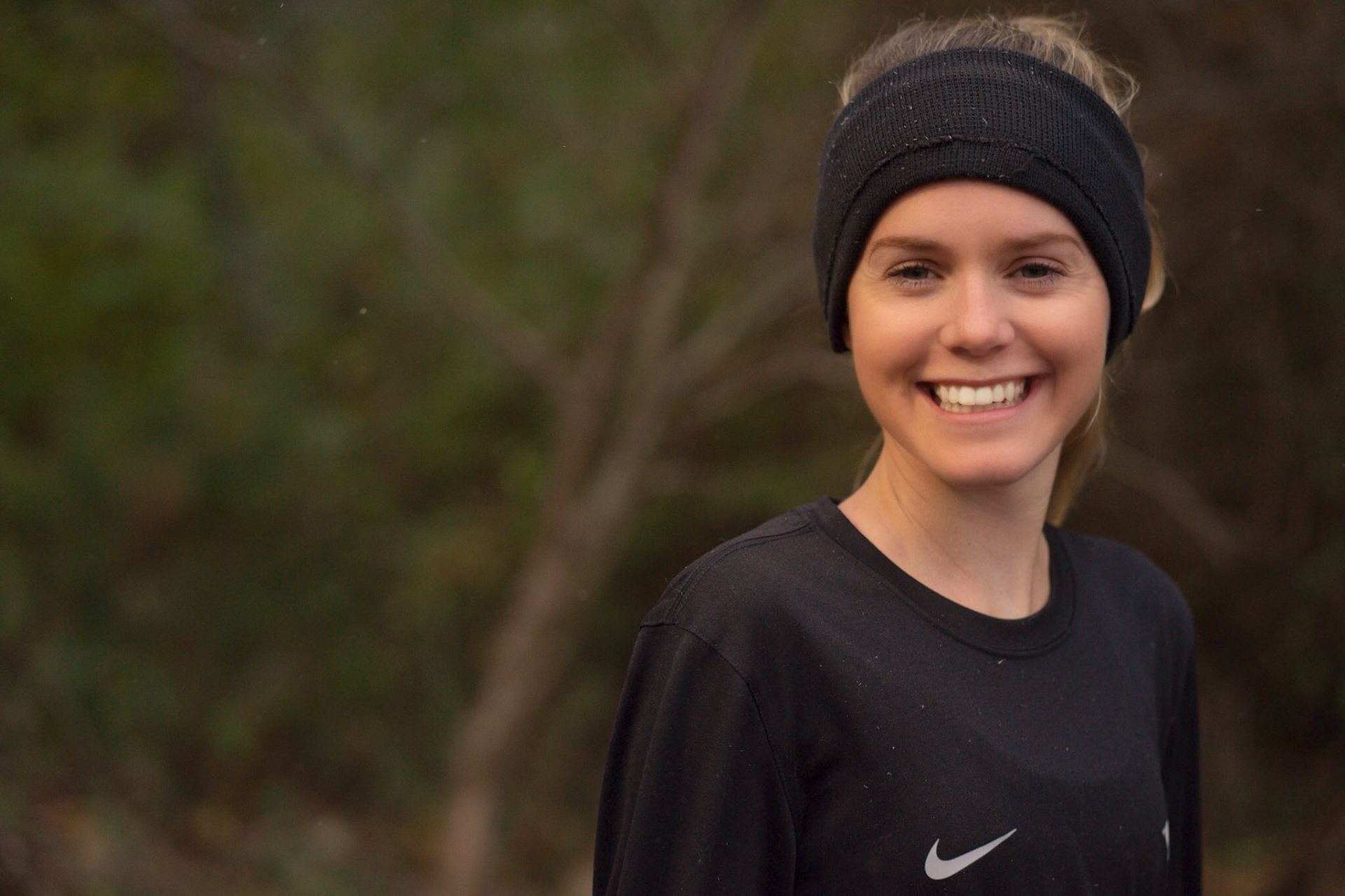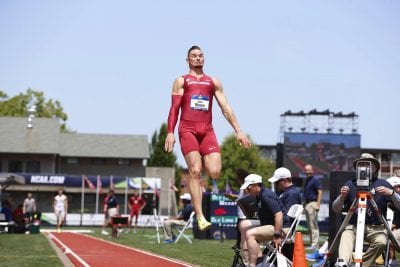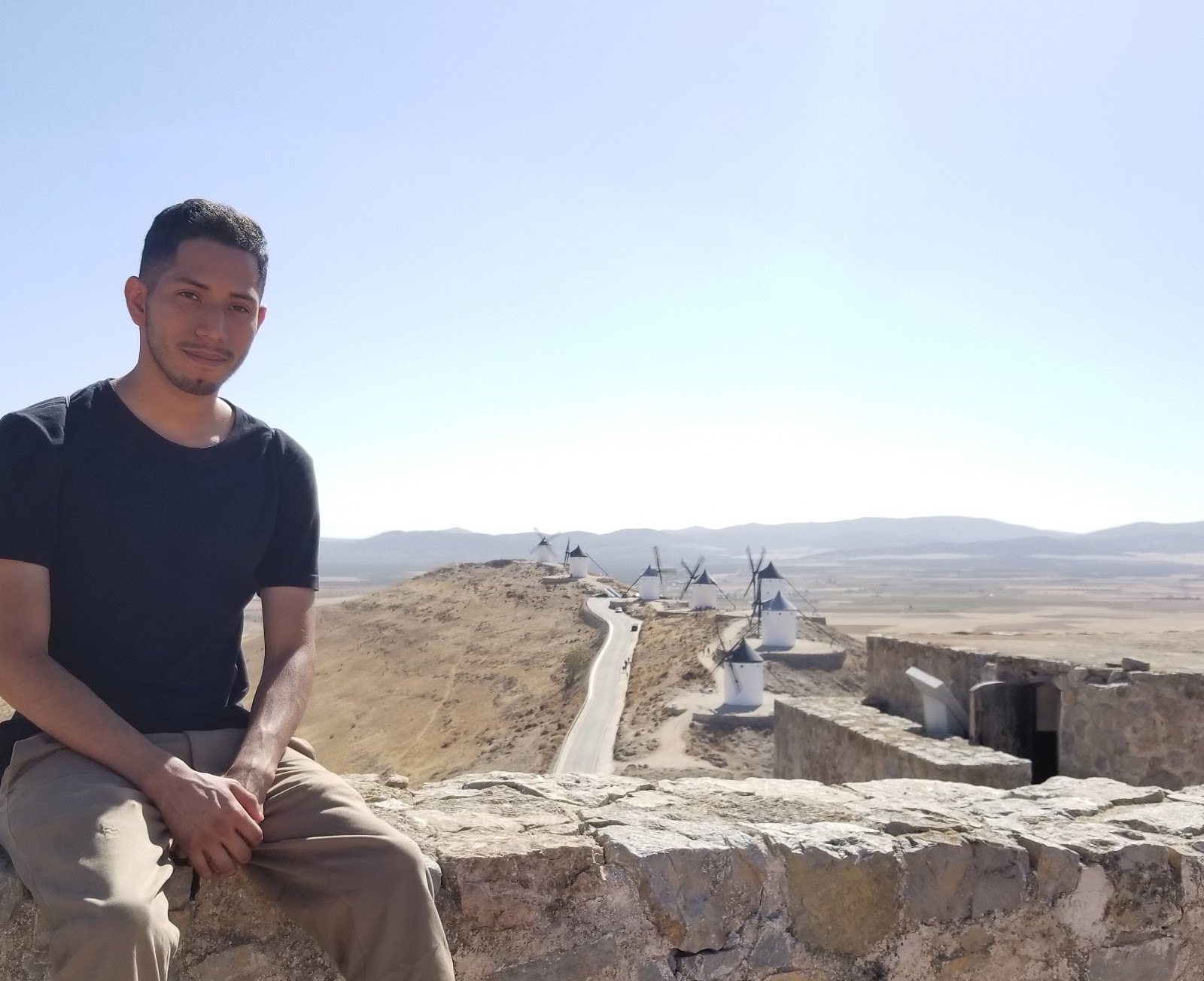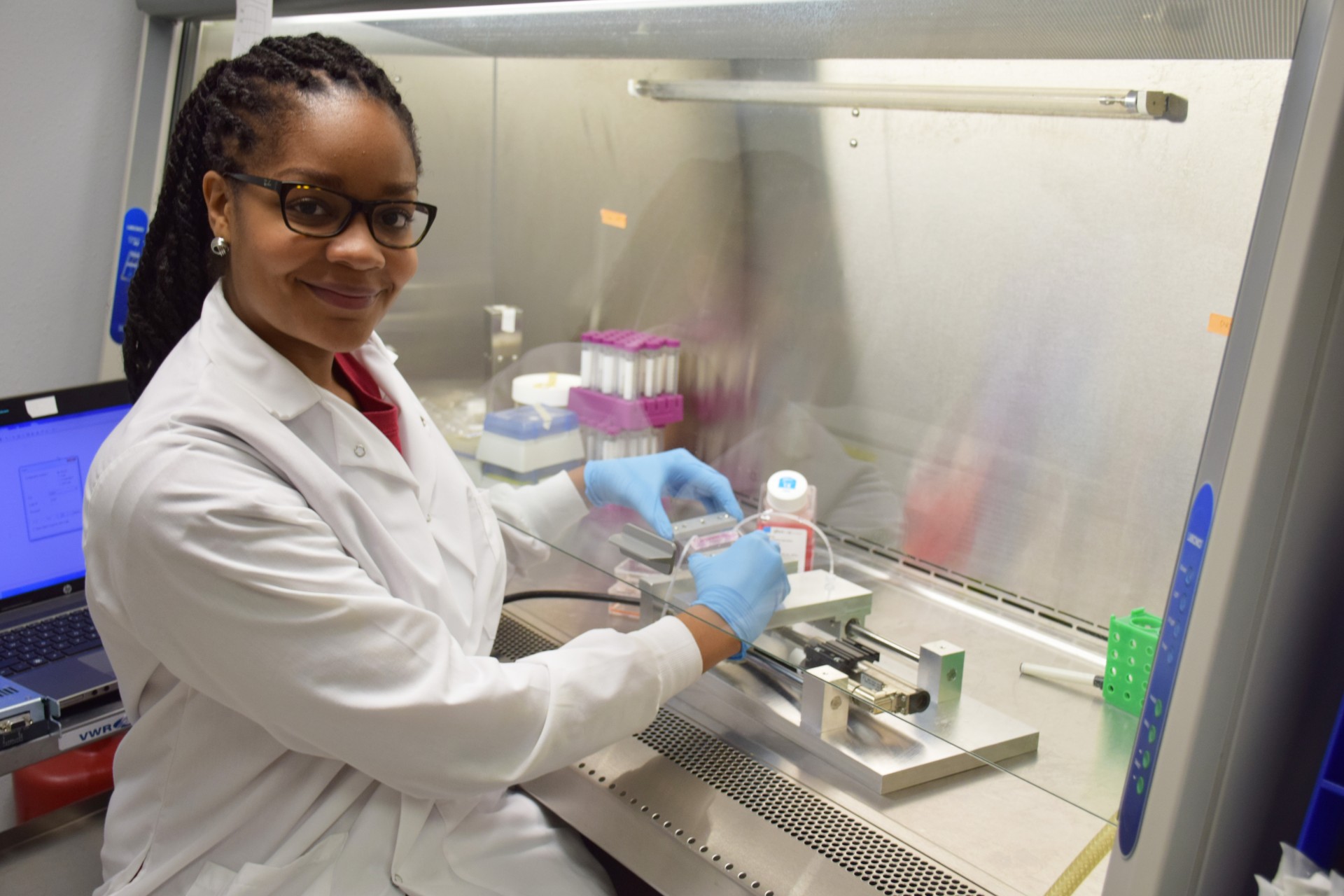Sep 25, 2019 | Questions & Answers

Justin Combs is a fifth-year student in the International Engineering Program at the University of Arkansas. In 2018-2019, he spent a year in Germany at the University of Darmstadt and Institute of Molecular Biology. Below he discusses the import of his travel abroad experience, advice for peers, and goals after graduation.
BME: Where are you from? How far along are you in your studies at the U of A?
COMBS: I’m from Bryant, AR and I’m now a fifth-year senior at the U of A (the International Engineering Program is 5 years).
BME: When/how did you first hear about study abroad opportunities for engineers?
COMBS: I heard about some while I was in high school, but I didn’t learn much until my freshman year at the U of A.
BME: Why Germany?
COMBS: Why not Germany? Germany is renowned for great engineering and there is a lot of really interesting medical research going on over there.
BME: Where in Germany were you, and what did you accomplish (internship, study, etc.)?
COMBS: I spent the first part of the year in Darmstadt (south of Frankfurt) attending the Technical University at Darmstadt, then I moved to Mainz to complete an internship at the Institute of Molecular Biology.
BME: How has study abroad aided your knowledge of biomedical engineering?
COMBS: It was a great opportunity to experience other cultures around Europe, which I think will help me to assess and meet needs of other cultures and people around the world when designing devices or products in the future.
BME: Any advice for other engineering students similarly looking to study abroad?
COMBS: If you ever have the opportunity, I highly recommend it and that you embrace the culture of whatever country you’re in. Experiencing other cultures and peoples can only help to broaden your view of the world.
BME: Any plans after graduation?
COMBS: I want to go into industry for a couple of years, then apply to medical school.
Apr 29, 2019 | Questions & Answers

Katrina Robinson is an undergraduate student of biomedical engineering and also a track-and-field athlete. Below she discusses cross-country success, academic drive, and shares advice for similarly ambitious students.
BME: When did you first become interested in biomedical engineering?
Robinson: To be completely honest, not until September last year. I came into college unsure about what exactly I wanted to study, but I knew that I really enjoyed science classes and that my strongest classes were ones involving critical thinking. After settling in during the fall and thinking a lot about what was right for me, I decided that biomedical engineering would be perfect. It was the perfect blend of science and math and becoming an engineer really excited me. It also opens up doors into the health field which I have always been very interested in.
BME: Why the University of Arkansas?
Robinson: Growing up as a track runner in Australia, I always knew that I wanted to pursue my passion for running at an American college. The sport is so much bigger here than at home and the opportunity to run on scholarship was also one that I couldn’t pass up. The University of Arkansas has such a renowned track program and when I took a visit here during my senior year I fell in love with the campus and fit right in with the team.
BME: What classes or labs have you enjoyed most?
Robinson: I have really enjoyed taking University Physics 1 this semester because I find physics to be such a fascinating subject. I like how tangible the science is and the fact that you are learning about concepts that you encounter in everyday life. I also loved taking the Principles of Biology class last semester because I find it interesting learning about the inner workings of the body.
BME: How do you balance being a student athlete and a biomedical engineering student?
Robinson: I developed a lot of good habits in high school which I have been able to carry with me into college. It can definitely be tough trying to balance a full course load while also fitting in hours of practice each day and having to miss a lot of school days travelling to meets, but I always try to plan out my week in advance to figure out the best times to study. I try to set aside small but consistent study sessions throughout the week instead of trying to cram it all in at one time, because I find this helps eliminate stress and gives me time each day to do other things I enjoy.

BME: Any advice for other student athletes who are studying biomedical engineering at the U of A?
Robinson: Classes can get stressful at times, so my advice is to remember why you are studying biomedical engineering in the first place. It is such a fascinating program that can lead to so many exciting careers, and reminding myself of this always helps motivate me when I feel weighed down with exams and homework. My other piece of advice (which is easier said than done) is to complete homework and start studying for tests as early as possible. This will make every course seem a lot more manageable and will eliminate a lot of stress.
BME: Do you feel that your success as an athlete and a biomedical engineering student complement each other? Where do you think this ambition comes from?
Robinson: I think they definitely complement each other because both require a lot of hard work and commitment. Just like studying, running each day can be tough and there are definitely days when a hard workout is the last thing I feel like doing. However, learning to put in the hard work consistently each day is what has helped me achieve my best results both on the track and in the classroom. I also find that running is a great way to destress when school feels overwhelming and it always helps me clear my mind. I have always been very ambitious which I have been able to apply to all aspects of my life.
BME: Any plans after graduation?
Robinson: After graduating, I plan to keep running and to hopefully be competitive at an Olympic Games. I don’t have any specific academic plans yet, but as I continue with my degree and explore the different aspects of biomedical engineering, I hope this will become clearer.
BME: What has been your proudest moment thus far in college?
Robinson: My proudest moment was being named SEC Freshmen of the Year during cross country season and also placing second at the cross-country Pre-Nationals in Wisconsin in a strong field.
Feb 14, 2019 | Questions & Answers

![]()
Ishita Tandon is biomedical engineering doctoral student at the University of Arkansas and a recent recipient of the American Heart Association fellowship. In the Q&A below, she discusses her history with biomedical engineering, work-life balance, mentorship under Dr. Balachandran and collaborative research with Dr. Kyle Quinn and his lab, among other things.
UArk BME: Did you always know you wanted to study biomedical engineering?
Tandon: Yes, I did! My parents are both doctors. My dad is a plastic and cosmetic surgeon and a burn specialist. I grew up with the idea that there is a dearth of affordable and sustainable skin scaffolds for burn patients and I wanted to do stem cell research and come up with a solution. Therefore, I took up biotechnology as the optional subject during my high school and did my undergraduate in biotechnology as well. After that, I came up here and have been enjoying my research as a PhD scholar.
UArk BME: You were recently awarded the American Heart Association Fellowship for your research into calcific aortic valve disease. Congratulations! What drove you towards this research?
Tandon: The research proposal we submitted for the American Heart Association Fellowship deals with using multiphoton imaging as a tool for early detection of aortic heart valve calcification. Our lab researches the early mechanisms involved in the aortic valve calcification. This research is important as the diagnostic technologies used in the clinic like ultrasounds, diagnose the disease at a later stage when irreversible damage has taken place. So, we wanted to come up with detection tools that applied to the early stages of the disease so that the intervention could be made before irreversible damage of the tissue occurs. In addition, Dr. Quinn had the technology of multiphoton imaging, which had applications in cancer and stem cell research. Therefore, we collaborated to see if the technology could be used as an early detection tool and be applied in the heart valve disease field as well.
UArk BME: What’s a typical day like for you as a PhD student? How do you balance the demands of your research with other responsibilities?
Tandon: Usually, my day revolves around the research. I try to be home by evenings and not spend odd hours in the lab, to maintain some work – life balance. The way we set expectations in our lab is by setting deadlines to get the research goals completed, irrespective of how and when we get it done. This setup gives us the flexibility of working at our own pace and time and enhances our productivity and work quality. It also helps us maintain the balance and get some personal time.
UArk BME: What made you choose the University of Arkansas for graduate school?
Tandon: I loved the fact that it was a new and growing department and the research projects going on were exciting. I had initially applied for a master’s degree. Dr. Kartik offered me a PhD position and I was intrigued when we discussed about the research opportunities. I was also drawn to the peaceful and serene vibe of the town with a nice climate.
UArk BME: Your research specifically focuses on early detection methods. Could you elaborate on what this research entails, and how it will help those diagnosed with the disease?
Tandon: Our lab focuses on creating multiscale platforms like 2-Dimensional or 3-Dimensional organ-on-chip models, animal models and biomaterials for tissue engineering applications. For my research, the organ-on-chip device and the animal model is used to simulate the healthy versus the diseased condition of the valve. The cells and tissues are then imaged using the multiphoton microscope and metabolic readouts are obtained. The goal is to correlate those readouts with the metrics, which are established in the literature in order to test the hypothesis that the multiphoton metrics could be used for early detection of the aortic valve calcification. My study serves as a proof-of-concept and would need rigorous validations before it can start benefiting patients directly. I believe, in short term the metric would be more useful in research to enable a longitudinal study in-vitrowith repeated measures given the fact that the imaging technique is non-destructive, label-free and provides quantitative data. Eventually, with the minimization of the imaging setup and further validation of the metrics, this detection strategy, may have a shot in clinics.
UArk BME: Which faculty members have you worked most closely with in your research here? What has it been like working with them?
Tandon: I work in the mechanobiology and soft materials lab with Dr. Kartik Balachandran. I feel blessed to be under his guidance. I hope to pursue a career in academia and Dr. Kartik is the ideal mentor and professor. He serves as a role model in terms of a lab PI, a professor, an administrator and a mentor. Having that mutual respect and understanding is pivotal when it comes to such demanding undertakings as a PhD.
For my current project, I have closely worked with Dr. Kyle Quinn and his lab. I enjoy their work ethic and determination. He gives us the extra push that is sometimes needed to speed things up and realize that we are competing in a highly competitive industry. So many times Dr. Muldoon and Dr. Wolchok have helped me and guided me through questions about microscopy or statistics. The professors in this department make it a safe and peaceful environment to be productive, train yourself for the future and not actually feel the pressure of outside world.
All the professors are supportive of each other’s research and the overall development of each student.
UArk BME: What have the greatest challenges been in you research work so far? How have you overcome them?
Tandon: One major challenge I have faced is that I get excited about all the cool research going on that it gets difficult to focus on one project. I want to take them all on. I want to learn all the different concepts and techniques and be a part of as many projects as I could. I tend to take new projects on without really finalizing the previous ones. The way I am trying to manage it, is by realizing the fact that the research associated with your name is the one that is published and materialized. We need to keep in mind that what we are doing as scientists is in long term for the benefit of society and needs to be accessible to them in some published form. I know many students suffer from the same issue on different levels and at some point we have to commit and see a project through, despite all the troubleshooting and technical challenges it entails.
UArk BME: What’s your favorite part of being a PhD student at the University of Arkansas?
Tandon: Umm, everything. I can list a couple of them. UArk offers something for everyone. Whatever our taste be in terms of reading, sports, music, arts, science, there is a place for everything. I have always loved to be a part of the extra-curricular activities and respect the fact that there is so much to do here when I need it. I also appreciative that our BMEG department is a small family unit where we all work and enjoy together. We have had activities like ping-pong tournament and department outings. People get along and strive to succeed all together.
UArk BME: Do you have any advice for undergraduates who might wish to pursue a graduate degree in biomedical engineering?
Tandon: In my experience, two most important things as an undergraduate hoping for graduate school are 1. having a strong understanding of the fundamentals and concepts in the field and 2. getting research experience in a lab. The grades drive the study patterns of most students and they tend to cram up and selectively study to just get the desired grades. I feel the focus should be to understand the concepts and soak in the knowledge. Academics is like a growing tree. If the roots are deep and strong, the tree is going to flourish and fruit well. For someone aspiring to pursue a graduate degree, they should definitely get some lab experience. The earlier during the undergraduate the better are their chances to be a part of the publications, to make them competitive for a graduate position.
Aug 29, 2018 | Questions & Answers

Gabe Moore
Gabe Moore is a senior studying biomedical engineering, and also a highly successful student athlete. Below, he discusses what drew him to biomedical engineering, how he balances schoolwork and athletics, the ways in which biomedical engineering and track and field complement one another, and more.
UArk BME: Did you always know you wanted to study biomedical engineering?
Moore: I have always loved learning about the human body and solving problems. I didn’t know I wanted to study biomedical engineering in particular, but when I found out it was a relatively new major at the University of Arkansas, I wanted to enroll right away.
UArk BME: What drew you to the University of Arkansas?
Moore: I began talking to the track coaches in high school and visited campus a few times for track meets. I love the location and atmosphere of the University, along with the track team’s great tradition and success. Track was important, but academics were the main focus, so I made sure the University had the major I wanted to study. Luckily they did, so it made attending the University an easy decision!
(more…)
Oct 27, 2017 | Questions & Answers

Luis Palafox at the windmills of the La Mancha region in Consuegra, Spain, about 80 miles outside of central Madrid.
Luis Palafox is a senior biomedical engineering major, and a current Gilman scholar studying abroad in Spain. Below, he answers questions about the scholarship application process and his study abroad experience so far.
UArk BME: Where are you from? How far along are you in your studies at the U of A?
Palafox: I am from Fort Smith, Arkansas; it is my hometown and I went to high school there (go Northside Grizzlies!) I completed 2 years of undergraduate study at the University of Arkansas Fort Smith prior to transferring to the main U of A campus in Fayetteville. I completed my junior year here before leaving to study abroad and I am now a senior, currently in my 4th year of undergraduate study.
UArk BME: When/how did you first hear about the Gilman Scholarship?
Palafox: I first heard about it from Bryan Hill when he made a presentation in my course “Intro to Biomedical Engineering,” which Dr. Raj Rao was teaching at the time (fall 2016). Bryan presented new study abroad options for BME students—there was an opportunity to go out of the country for transferable credits in Australia, Denmark, or Spain. Towards the end of the presentation he discussed funding options such as saving personal money, going to nearby local churches for possible scholarships, setting up a GoFundMe, applying for bank loans, using FAFSA, applying for UArk scholarships like the Johnetta Cross Brazzell Award or a College of Engineering travel grant, and applying for outside scholarships like the Gilman Scholarship.
(more…)
Oct 2, 2017 | Questions & Answers

Nasya Sturdivant
Nasya Sturdivant is a doctoral student in biomedical engineering here at the U of A. She is presently at work building an effective synthetic blood-brain barrier that will help improve the treatment of traumatic brain injuries.
UArk BME: Did you always know you wanted to study biomedical engineering?
Sturdivant: I didn’t know I wanted to study biomedical engineering until my junior year in undergrad. A generation ago, the field of biomedical engineering wasn’t widespread. So it wasn’t a subject I grew up wanting to study. I did, however, know I wanted to be in a life sciences field and while in high school I gained interest in engineering and design. Researching a combination of the two is when I began to learn more about the emerging field of biomedical engineering.
UArk BME: You received your undergraduate degree from North Carolina A&T State University in Greensboro, NC. What made you choose the University of Arkansas for graduate school?
Sturdivant: The Department of Engineering at the U of A was very new when I joined. The exciting research interests of the faculty along with the extreme potential for growth of the department was a huge draw for me. I also had the opportunity to visit the university and the department before applying and I really meshed with Dr. Balachandran, my current advisor.
(more…)







